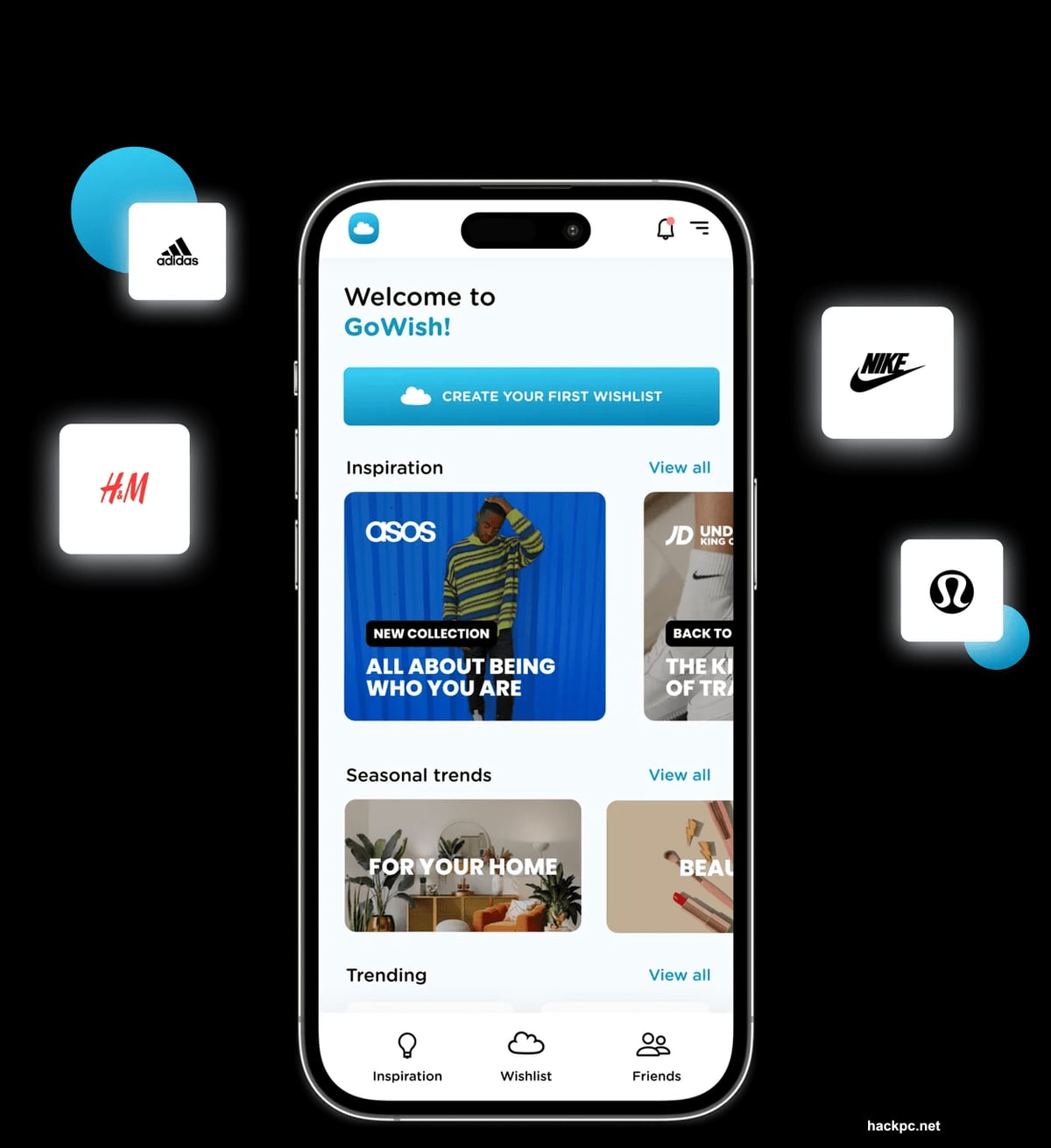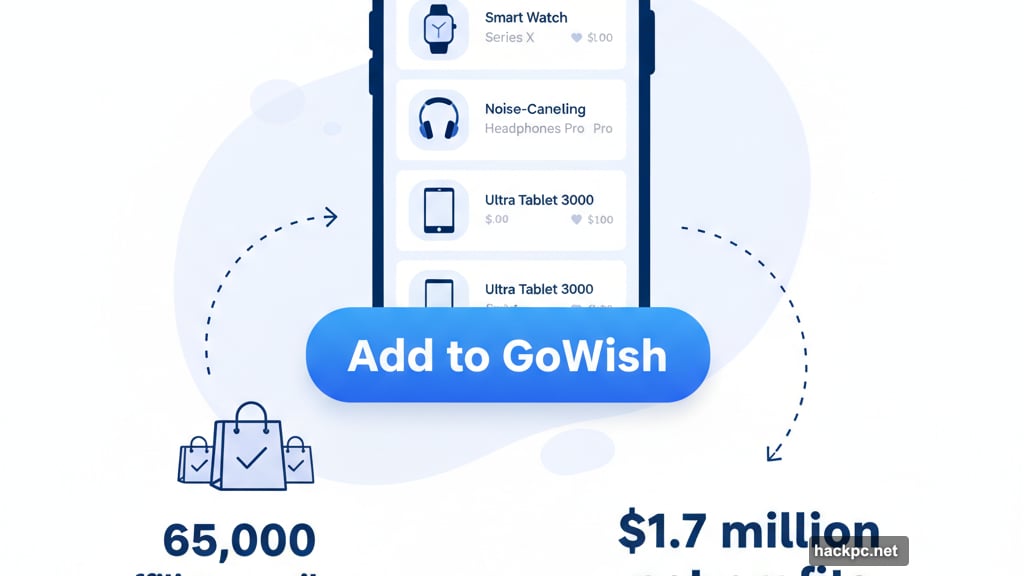
Recession worries didn’t stop GoWish from having its biggest year ever. The shopping and wish list app doubled its user base in 2025 and broke records throughout November.
This week, GoWish climbed to No. 2 on the U.S. App Store. That’s its highest ranking yet. Plus, the app now serves over 13.6 million registered users worldwide, with hundreds of thousands signing up daily this month.
But here’s what makes this story unusual. GoWish didn’t start as a tech startup. It began as a seasonal gimmick from a postal service.
A Postal Service Built This App
GoWish launched in 2015 as “Ønskeskyen” (Danish for “wish cloud”). The Danish-Swedish postal service PostNord created it as a holiday marketing tool.
However, the founders spotted potential beyond seasonal promotions. In 2020, Danish VC Dotcom Capital acquired the app and spun it out as an independent tech company. Now it operates globally under the GoWish brand.
“We might be the first state-founded tech platform to go global as a privately-owned scale-up,” said Casper Ravn-Sørensen, chief growth officer and co-owner.
That’s a wild transformation. A postal service side project became a profitable tech company with 90 employees.

How the App Actually Works
GoWish lets users create multiple wish lists for different occasions and people. Add products by pasting URLs, searching, or browsing curated feeds featuring millions of items.
Ready to buy? Tap a button. The app sends you directly to the retailer’s website. Simple.
The company partners with 65,000 affiliate retailers and 700 brands. Many brands now add “GoWish” buttons to their own websites. That affiliate model generated $1.7 million in net profits after tax during fiscal year 2024.
So the business model works. The company declined to share total revenue figures, but those profits are being reinvested into growth.
Marketing Strategy Drives Explosive Growth
GoWish doubled its user base from 2024 to 2025. What changed?
The company ramped up marketing across Meta, TikTok, Google, and Snap. In fact, Snap highlighted GoWish as a partner success story during its Q4 earnings call.

“We’re very good at optimising our marketing spends across digital platforms and that makes our global roll-out very effective,” Ravn-Sørensen explained.
The numbers back this up. The U.S. market now has 6.2 million users. The U.K. has around 1 million. Meanwhile, GoWish dominates its home market of Denmark with over 50% market penetration and 3.5 million registered users.
That Danish dominance makes sense given the app’s postal service origins. But the international expansion proves the concept travels well.
The Problem GoWish Solves
Ever received duplicate gifts? Or bought something for someone who already owns it? GoWish prevents both scenarios.
When family or friends reserve items on your wish list, others can’t accidentally buy the same thing. No more awkward returns or double gifts.
“We have a mission of ‘fixing gifting,'” noted Ravn-Sørensen. The company wants to “make users’ dreams and wishes come true while making double-gifting and returns a thing of the past.”

That’s a real pain point. Americans return billions of dollars worth of holiday gifts annually. GoWish attacks this problem by coordinating purchases among gift-givers.
AI Features Coming Soon
The company plans to add AI capabilities, though it hasn’t shared specifics yet.
Ravn-Sørensen hinted at ambitious goals beyond wish lists. GoWish wants to become the “global genie of social shopping, that can predict future consumer trends across generations.”
That’s vague. But if the app accumulates millions of wish lists across demographics, it could spot emerging trends before they hit mainstream retail.
Recession Fears Didn’t Slow Growth
Consumer spending worries dominated headlines throughout 2025. Yet GoWish thrived.
Why? Wish lists help people communicate exactly what they want. That reduces waste and buyer anxiety during uncertain economic times. Plus, the app doesn’t require users to spend money—it just facilitates smarter spending when they’re ready.

Moreover, the app is free to download and use. Users only spend money when they actually purchase items. So there’s no barrier to adoption even during economic downturns.
The Copenhagen-based company secured additional funding in early 2025 when London-based Capital D bought one-third of the business. Dotcom Capital still owns the remaining two-thirds.
This Changes Holiday Shopping
GoWish represents a shift in how people approach gift-giving. Instead of guessing what someone wants, you know exactly what they need.
The app is available on iOS and Android, plus there’s a Chrome extension for adding items from your computer. That cross-platform approach removes friction from building wish lists.
Meanwhile, brands benefit from higher conversion rates. When someone clicks through from a wish list, they’re ready to buy. That’s much more valuable than random browsing.
The real test comes over the next few weeks as holiday shopping peaks. If GoWish maintains its momentum through December, it could establish itself as essential infrastructure for gift-giving.
Most wish list apps remain niche tools. GoWish might be the first to achieve mainstream adoption. Its postal service origins gave it unusual credibility and market penetration in Denmark. Now it’s proving that model scales globally.



Comments (0)